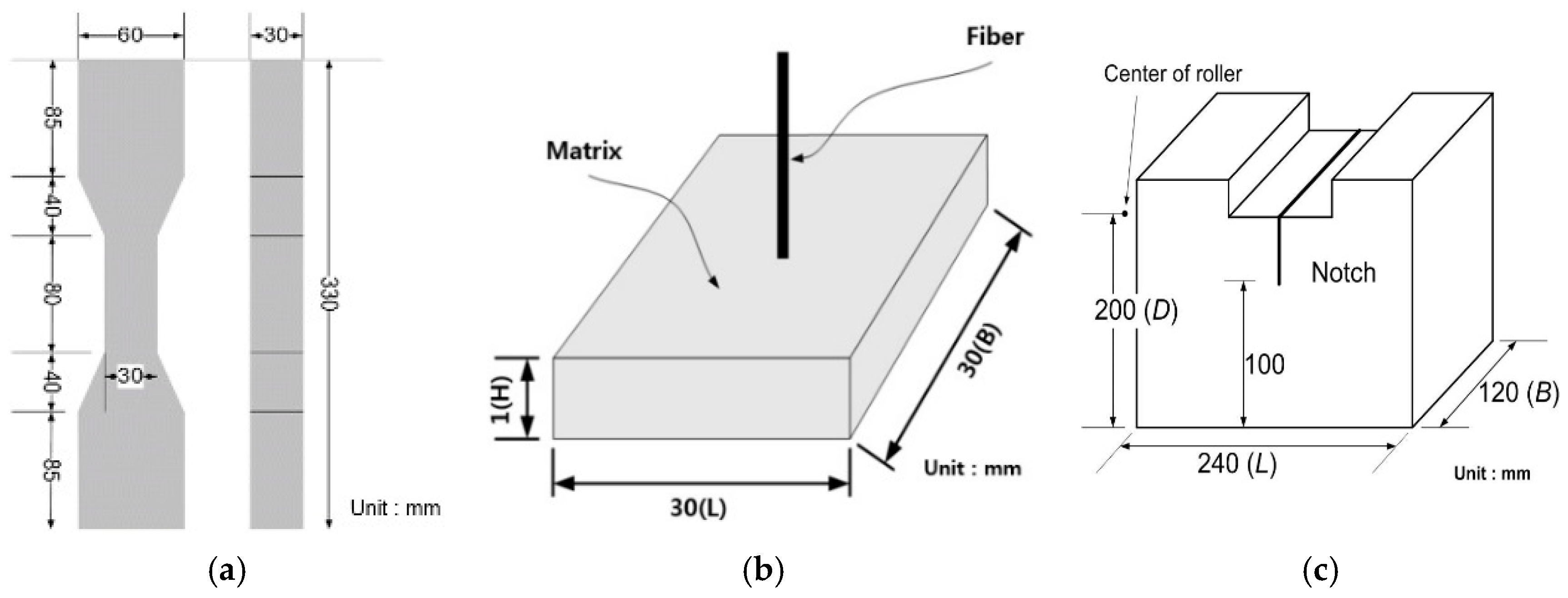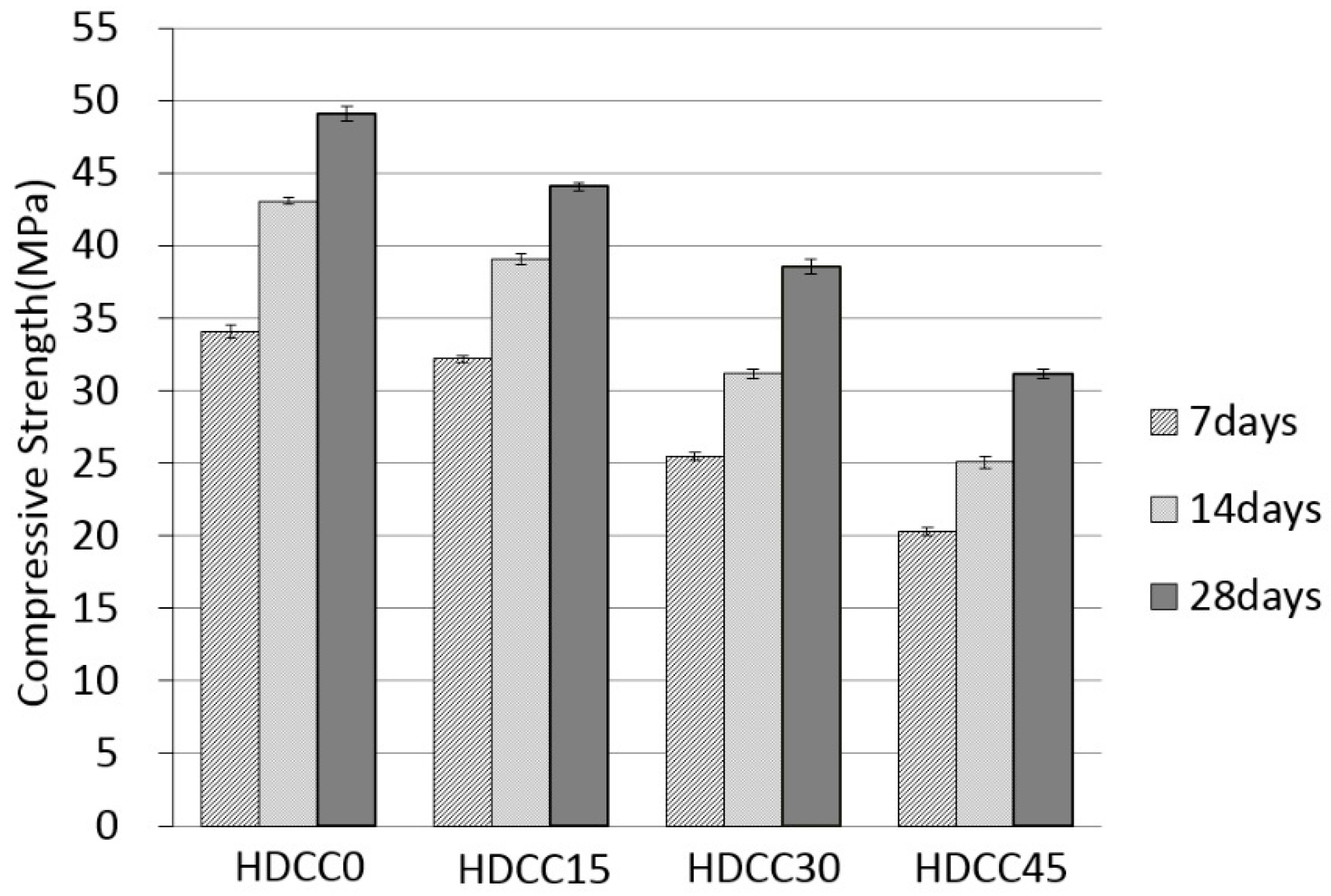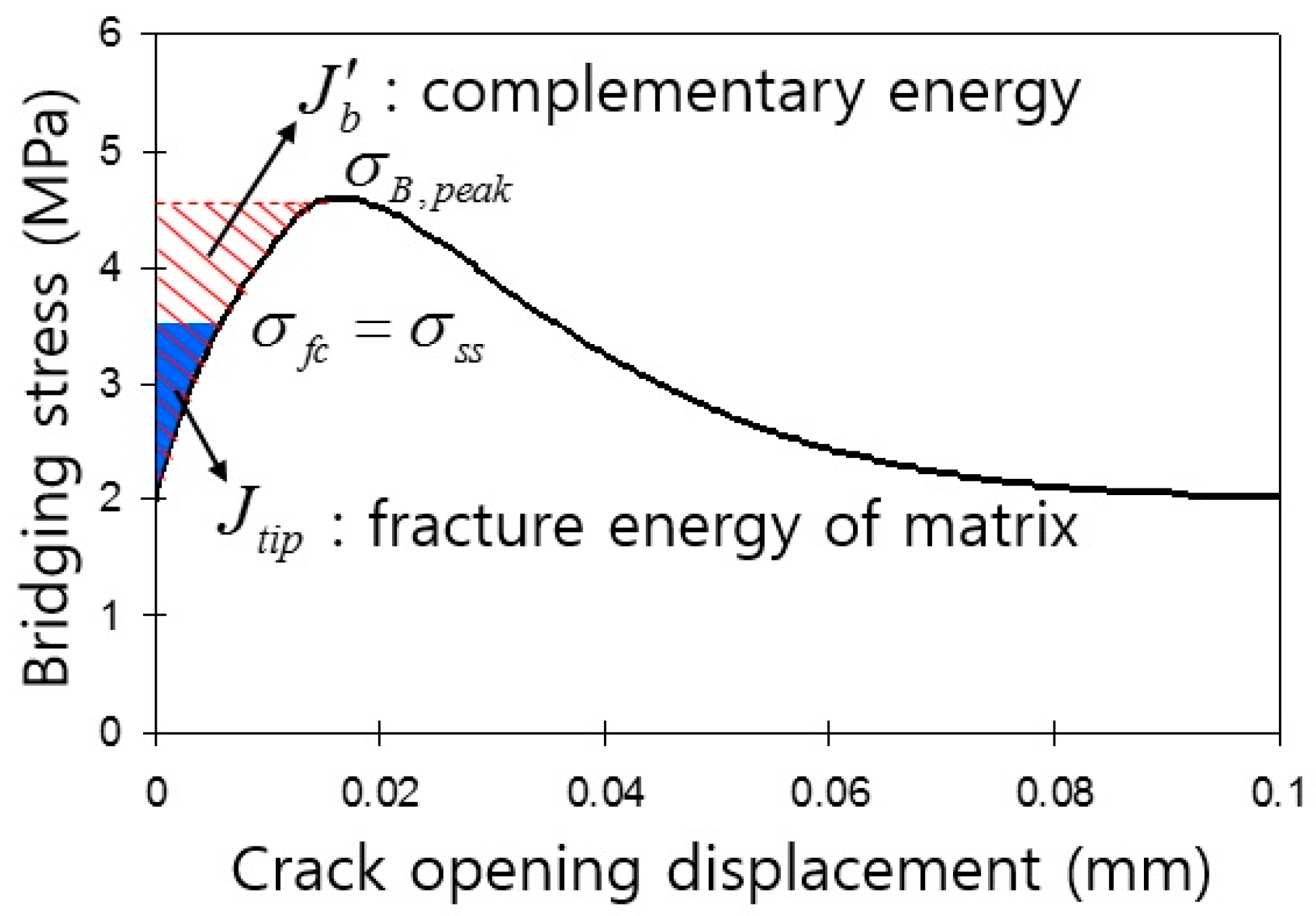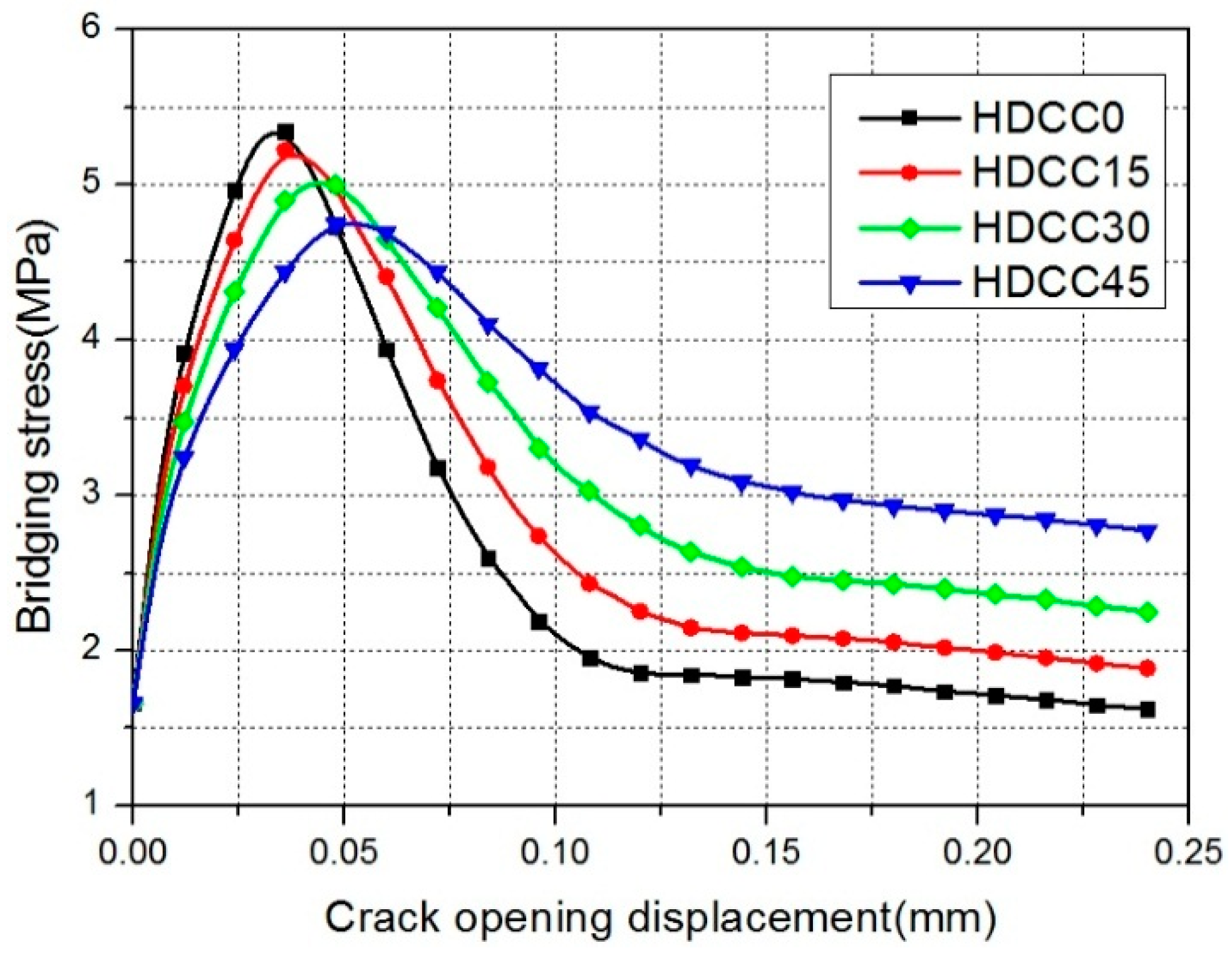3.1. Compressive Strength and Uniaxial Tensile Behavior
Figure 3 shows the compressive strength of each mixture. As shown in
Figure 3, all mixtures showed compressive strength over 30 MPa (a compressive strength level widely used for structural concrete) at an age of 28 days. The HDCC0 specimen showed the highest compressive strength (48.8 MPa on average at 28 days). The compressive strength decreased sequentially as the amount of cement replaced with limestone powder increased. This may be attributed to the low hydration rate of limestone powder. As expected, the compressive strength of all specimens increased with age.
Figure 4 shows the tensile stress-strain curves of each HDCC mixture. All mixtures showed apparently pseudo strain-hardening behavior under uniaxial tensile load. As shown in
Figure 4, stress drop can be observed when cracks occurred, which means that all specimens had multiple micro-cracks.
The initial cracking strength, tensile strength, and tensile strain capacity of each mixture are listed in
Table 3. The tensile strength and tensile strain capacity were defined as the maximum tensile stress and the tensile strain corresponding to the tensile strength, respectively. Similar to compressive strength test results, the initial cracking strength decreased as the replacement ratio of limestone powder increased. This is attributable to the fact that the cracking strength depends on the matrix properties (i.e., the strength of matrix and flaw size in the matrix) [
23]. Although the initial cracking strength depends on the replacement ratio of cement with limestone powder, all mixtures showed similar ratios of initial cracking strength to compressive strength. The ratios of initial cracking strength to compressive strength of each mixture HDCC0, HDCC15, HDCC30, and HDCC45, were 8.2%, 8.3%, 8.3% and 8.3%, respectively, which are similar to that of normal concrete.
The tensile strength depends on the properties of the fibers and interfacial properties between the fiber and the matrix, as well as the matrix properties. Therefore, the tensile strength of composites generally decreases with decrease in the strength of the matrix. This results in decreased bonding strength between the fiber and the matrix, when the fiber properties are the same. Although the tensile strength of each mixture decreased with increase of the replacement ratio of cement with limestone powder, the ratios of tensile strength to compressive strength slightly increased with increase in the replacement ratio of limestone powder. The ratios of tensile strength to compressive strength of each mixture HDCC0, HDCC15, HDCC30, and HDCC45, were 10.5%, 10.7%, 11.1% and 11.2%, respectively. The ratios of tensile strength to initial cracking strength also increased with an increase in the replacement ratio of limestone powder. The ratios of tensile strength to initial cracking strength of each mixture HDCC0, HDCC15, HDCC30, and HDCC45, were 1.28, 1.30, 1.34, and 1.35, respectively.
Kanda and Li (2006) proposed practical criteria for saturated pseudo-strain hardening behavior of composites [
24]. They proposed performance indices (i.e., stress performance index and energy performance index), both of which must be larger than unity to achieve saturated pseudo-strain hardening behavior. The stress performance index was defined as the ratio of the peak fiber bridging stress to the initial cracking strength. The peak fiber bridging stress is identical to the tensile strength of the composite. When this condition is satisfied, multiple-cracking behavior can be ensured. The higher the stress performance index is, the higher the potential for multiple-cracking behavior and the higher the tensile strain capacity. The tensile strain capacity increased as the stress performance index increased. All mixtures showed several hundred times higher tensile strain capacity than normal concrete, of which the tensile strain capacity is approximately 0.01%. From these test results and analysis, it can be confirmed that the stress performance index can be adopted when designing the mixture and evaluating a composite incorporating limestone powder. Regarding the energy performance index, it is necessary to take into account complementary energy in the fiber bridging curves and matrix fracture toughness, which will be discussed in the section on micromechanical analysis.











